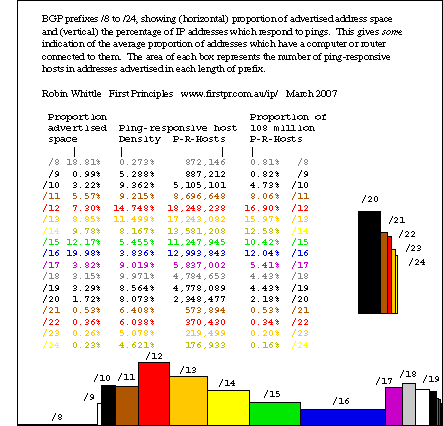TCP/IP - proposals, research and discussion
Robin Whittle rw@firstpr.com.au 2010-09-07
Ivip - a potential new routing and addressing architecture for the Internet
Ivip (Internet Vastly Improved Plumbing, or any other set of words you care for) is intended to allow millions to billions of independent, portable, IP addresses and subnets to be used by millions to billions of end-users, with the hosts for these being located in any edge-network (provided the edge network has an Egress Tunnel Router to serve the host).
In
short, it is intended to relieve the BGP routing system of the tasks of
portability, multihoming and traffic engineering for finer-grainedand
more numerous address ranges than the 200,000+ advertised prefixes it
is currently struggling to cope with.
The Ivip directory also contains many items concerning the IRTF Routing Research Group's work from April 2008 onwards.
SRAM-based IP Forwarding
This is probably of historical interest only. In early 2008, I thought the Internet's scalable routing problem could be solved by giving BGP routers the ability to handle up to 16 million prefixes, each as long (in bits) as /24- each as short, in numbers of IP addresses, as 256 IPv4 addresses. I wrote an Internet Draft about this, but soon learned that while the FIB (Forwarding Information Base) of routers is a problem, the real difficulty is the BGP system handling such large numbers of prefixes.
Ping probing of IPv4 host density

In February and March 2007 I sent random ping packets to every IPv4 prefix, and combined the results with information about what proportion of each prefix was advertised in the global BGP system, meaning these ranges of addresses are operational and connected to the Internet. The result is, for each prefix 0.0.0./8 to 223.0.0.0/8, a rough indication of the density of hosts (computers, routers etc.) as a percentage of the "advertised" address space.
I wanted to see this, in order to understand how well the IPv4 address space is being used. Some ranges of addresses are reserved and can never be used for connecting to the Net. Of the remainder, some is reserved by the IANA and by the Regional Internet Registries. The rest has been assigned to ISPs and large Internet users who operate Autonomous Systems. However, not all that space is "advertised".
I also analysed the distribution of ping-responsive-host densities among samples of advertised prefixes of different lengths. Graphs, discussion and software can be found at the above page.
Various files belonging to other folks
A place to put things relating to scalable routing - files from other people who need a stable place on the Net to make them available.